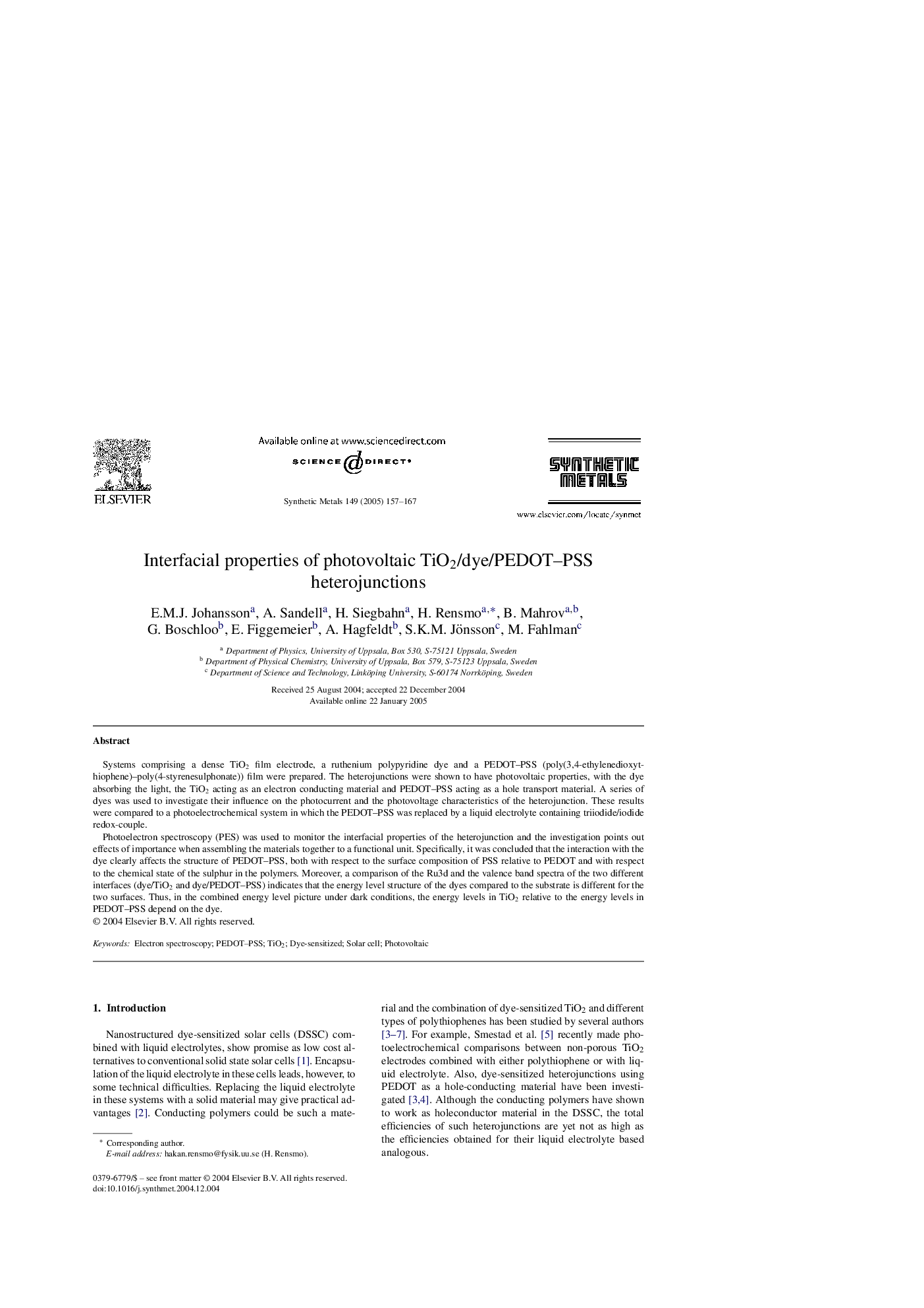| Article ID | Journal | Published Year | Pages | File Type |
|---|---|---|---|---|
| 9776511 | Synthetic Metals | 2005 | 11 Pages |
Abstract
Photoelectron spectroscopy (PES) was used to monitor the interfacial properties of the heterojunction and the investigation points out effects of importance when assembling the materials together to a functional unit. Specifically, it was concluded that the interaction with the dye clearly affects the structure of PEDOT-PSS, both with respect to the surface composition of PSS relative to PEDOT and with respect to the chemical state of the sulphur in the polymers. Moreover, a comparison of the Ru3d and the valence band spectra of the two different interfaces (dye/TiO2 and dye/PEDOT-PSS) indicates that the energy level structure of the dyes compared to the substrate is different for the two surfaces. Thus, in the combined energy level picture under dark conditions, the energy levels in TiO2 relative to the energy levels in PEDOT-PSS depend on the dye.
Related Topics
Physical Sciences and Engineering
Materials Science
Biomaterials
Authors
E.M.J. Johansson, A. Sandell, H. Siegbahn, H. Rensmo, B. Mahrov, G. Boschloo, E. Figgemeier, A. Hagfeldt, S.K.M. Jönsson, M. Fahlman,
